After Qualcomm released two new Snapdragon chips yesterday– Snapdragon 865 and Snapdragon 765 / 765G , today Qualcomm further announced their technical details.
First, let’s talk about the baseband part. Although the Snapdragon 865 uses the external X55 baseband, its maximum download speed can reach 7.5 Gbps per second, which is a significant improvement over the X50 5Gbps per second.

For the design of the baseband plug-in, it is not excluded that Qualcomm hopes to take into account the product design cycle of OEMs. After all, the X55 baseband was already listed a few months ago. Equipment manufacturers can start product development in 2020 based on the X55 + old 855 platform, and then switch to the 865 platform without the need to do the original antenna RF components of the device. Too many changes.
Moreover, X55 baseband supports 5G frequency bands more extensively, including not only millimeter wave and TDD / FDD frequency bands below 6GHz, it also supports non-independent (NSA) and independent (SA) networking modes, dynamic spectrum sharing (DSS), global 5G roaming, and multi-SIM design.
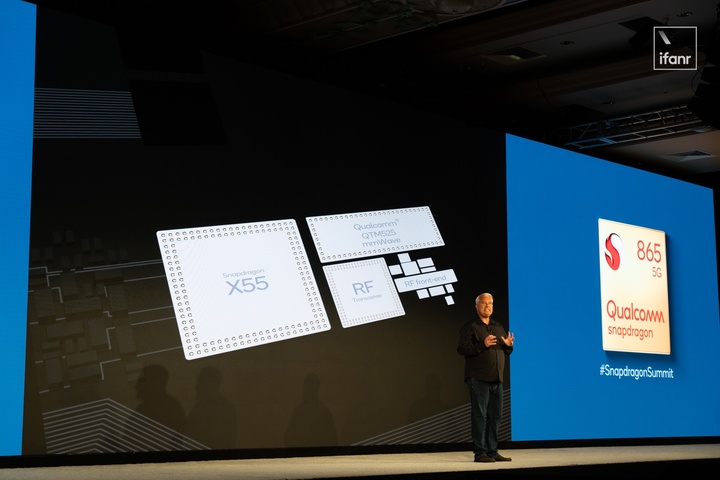
At the same time, the Snapdragon 865 also supports new connection technologies such as WiFi 6, Bluetooth 5.1. Ultra-wideband voice (SWB) technology can further improve the sound quality of Bluetooth headsets, and provide lower latency, longer battery life, and higher Link stability.
Qualcomm also emphasizes that the X55 basebandThey are the first baseband chips to support all 5G frequency bands in the world, and it is expected that they will be used in the 5G iPhone next year.
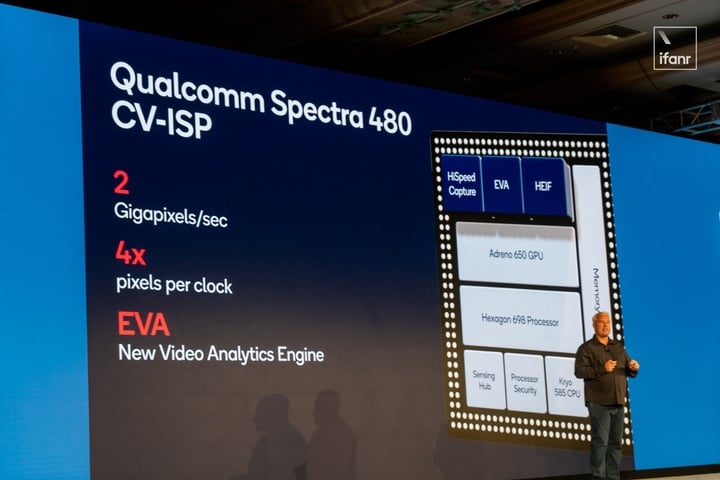
Second, Qualcomm also focused on improving the image processing capabilities of the Snapdragon 865. The new ISP image processor named “Spectra 480” supports a processing speed of 2 billion pixels per second and can take photos up to 200 million pixels. Up to 8K resolution, or 4K-HDR video supporting Dolby Vision, you can even record 4K-HDR video while capturing up to 64 megapixel photos.
So looking at it, there will definitely be a lot of Android phones with billion-pixel cameras next year.
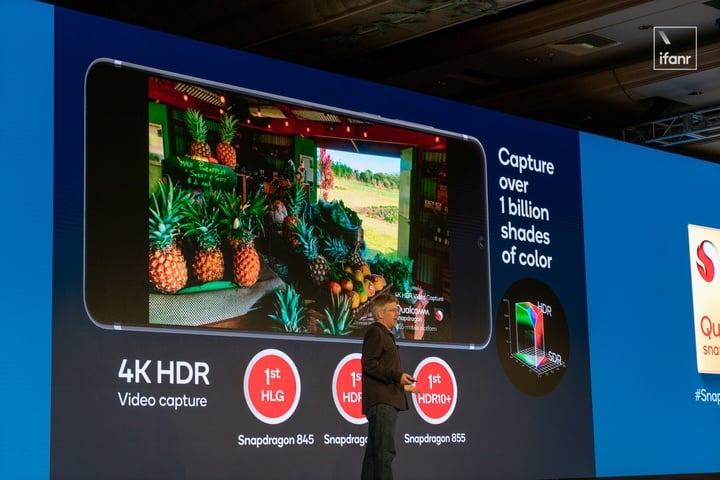
The performance improvement is more conventional. One is the CPU. This time, the Snapdragon 865 uses the new Kryo 585 architecture, which is still a 7nm process, but uses the same TSMC N7P process as the Apple A13.
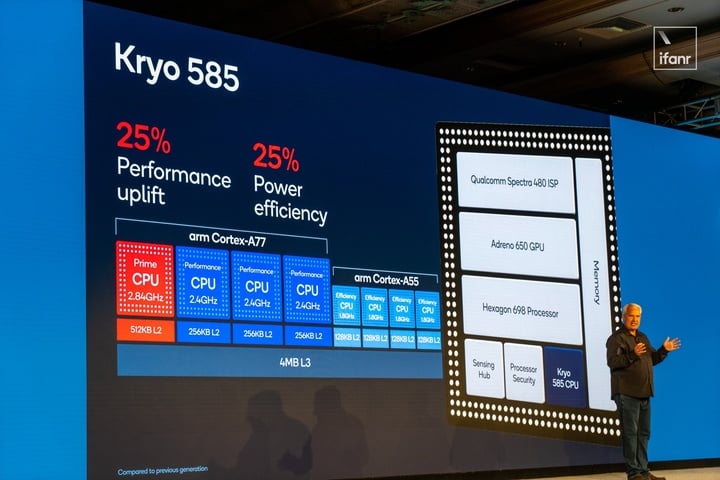
It also maintains the “1 + 3 + 4” eight-core design similar to the 855 chip. It consists of a 2.84GHz A77 core, three 2.42GHz A77 cores, and four 1.80GHz A55 cores. Performance Compared to last year’s Snapdragon 85525% faster and 25% lower power consumption.
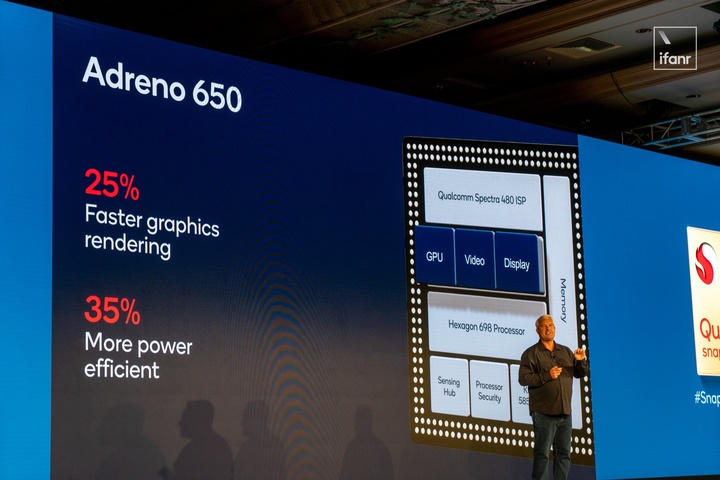
On the GPU, the new Adreno 650 has 25% better performance and 35% better power consumption than last year. Qualcomm also said that the Snapdragon 865 will allow game developers to introduce end-game-level light sources and post-processing features, and provide OEM manufacturers with driver updates for Adreno GPUs.
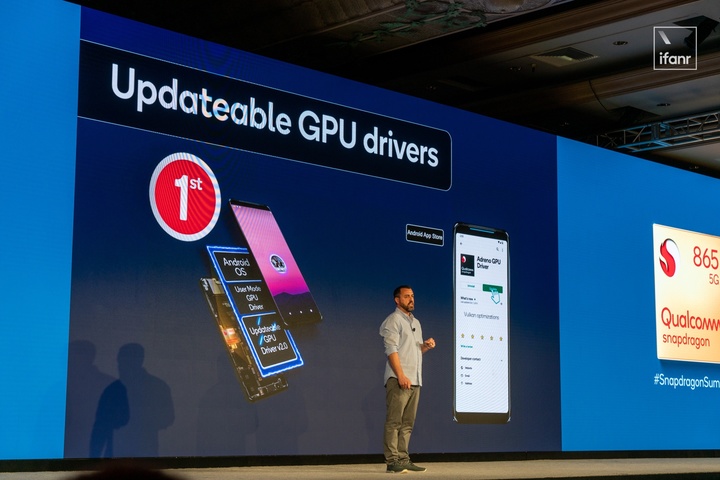
This is similar to the graphics card driver for the PC platform. In the future, players can download the graphics driver and GPU settings from the app store, so that some top games can achieve better performance. According to AnandTech , Qualcomm plans to update the GPU driver every quarter.
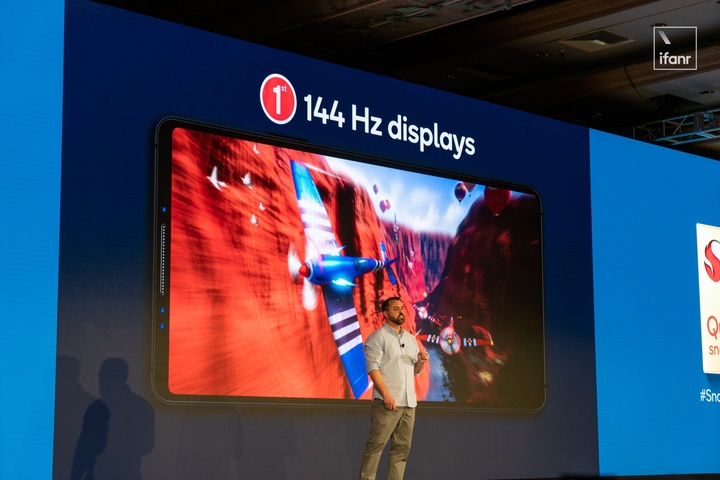
The Snapdragon 865 also supports screens with a maximum refresh rate of 144Hz. It seems that there will be more mobile phones with high refresh rate screens such as 90 / 120Hz next year.
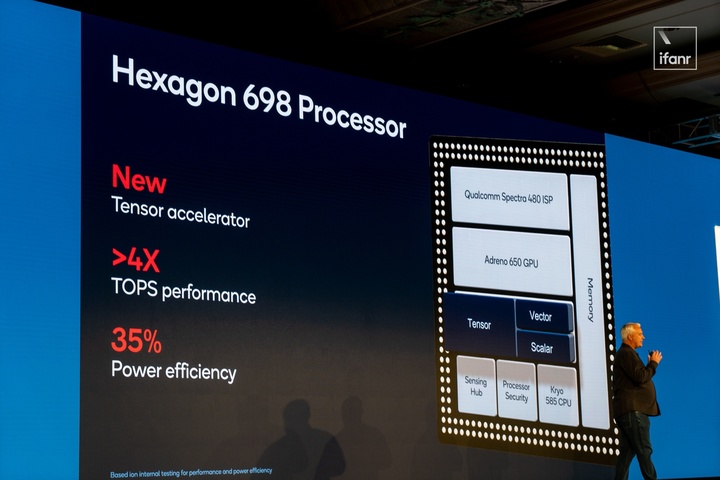
In terms of artificial intelligence, the Snapdragon 865 uses a fifth-generation AI engine that supports up to 15 trillion AI computing power, which is twice as much as last year. The new real-time translation feature allows mobile phones to translate user voices in real-time. Into foreign language text and speech.
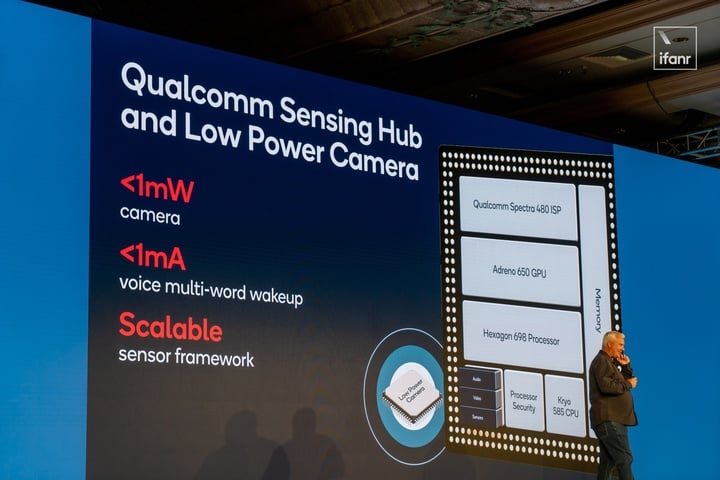
Qualcomm also designed a dedicated sensor center for the Snapdragon 865, which mainly enables the device to maintain the real-time wake-up function of the voice assistant at an ultra-low power consumption level (less than 1 milliwatt). There is no small help.
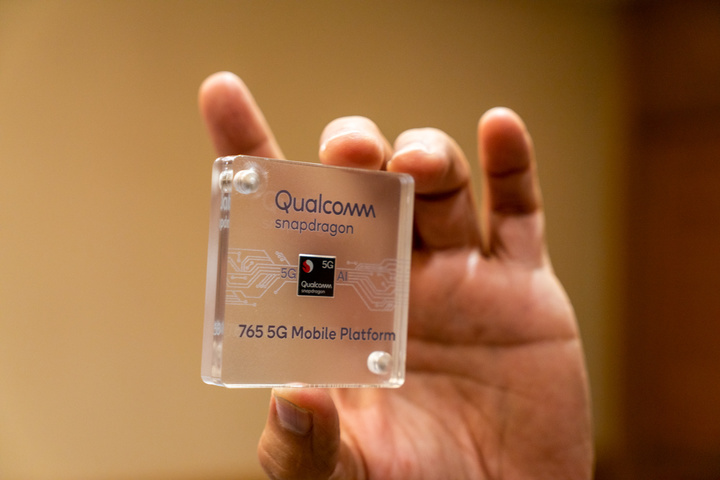
As for the Snapdragon 765 chip, some of its features are consistent with those of the Snapdragon 865, such as the fifth-generation AI engine and a new sensor center of gravity. The main differences are reflected in the CPU / GPU and image processor. .
Among them, the image processor used by the Snapdragon 765 is Spectrum 355, which supports up to 4K resolution video recording and 192 million pixel photo shooting.
In terms of CPU, the Snapdragon 765 uses an 8-core Kryo 475 architecture, based on Samsung’s 7nm EUV process. It consists of a 2.3GHz A76 core, a 2.2GHz A76 core, and six 1.8GHz A55 core composition, supports WiFi 6 and Bluetooth5.1, GPU uses Adreno 620.

But the Snapdragon 765 still has its advantage, that is, the integrated 5G baseband. This time, the Snapdragon 765 has a built-in X52 baseband. The maximum download speed is 3.7 Gbps per second. It also supports most of the world’s 5G bands such as millimeter wave and sub-6, which has a wider coverage than the first generation X50 baseband.
This also means that the power consumption of the Snapdragon 765 on a 5G network should be lower than that of the Snapdragon 865, so as to obtain longer battery life. It is believed that it will win the favor of many high-end Android phones.
As for the Snapdragon 765G chip with a “G” suffix, it provides some additional features specifically for gamers. Qualcomm said that the graphics rendering speed of the Snapdragon 765G is 20% faster than that of the standard version of the Snapdragon 765 (the core frequency has been increased to 2.4GHz, and the GPU should also be changed). It supports a 120Hz high refresh rate screen and some more advanced games. Management functions.

In summary, Qualcomm Snapdragon 865 and 765 chips still focus on 5G, photography and AI and games, which is actually following the needs of mobile phone manufacturers in recent years, such as more and more The emergence of multi-camera designs and ultra-high pixel lenses is also driven by demand in professional fields such as gaming phones and cloud gaming.
It is foreseeable that under the guidance of these two chips, next year’s mid-to-high-end Android phones will basically achieve full 5G dual-mode support, while pure 4G phones will only appear in the mid-to-low price segment.
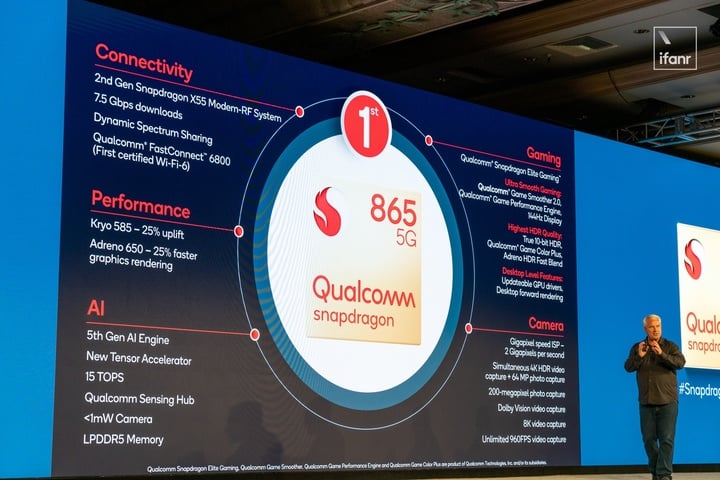
Qualcomm I also told the media such as The Verge that this time the Snapdragon 865 chip was packaged and sold with the X55 baseband. In this case, mobile phone manufacturers have no need to make 4G flagships.
For consumers, if you want to get in one step, buy an Android phone that can be used in the next 3-5 years and supports most of the world’s 5G frequency bands. Because it won’t be long before, mobile phones equipped with Snapdragon 865/765 chips will be launched on a large scale.